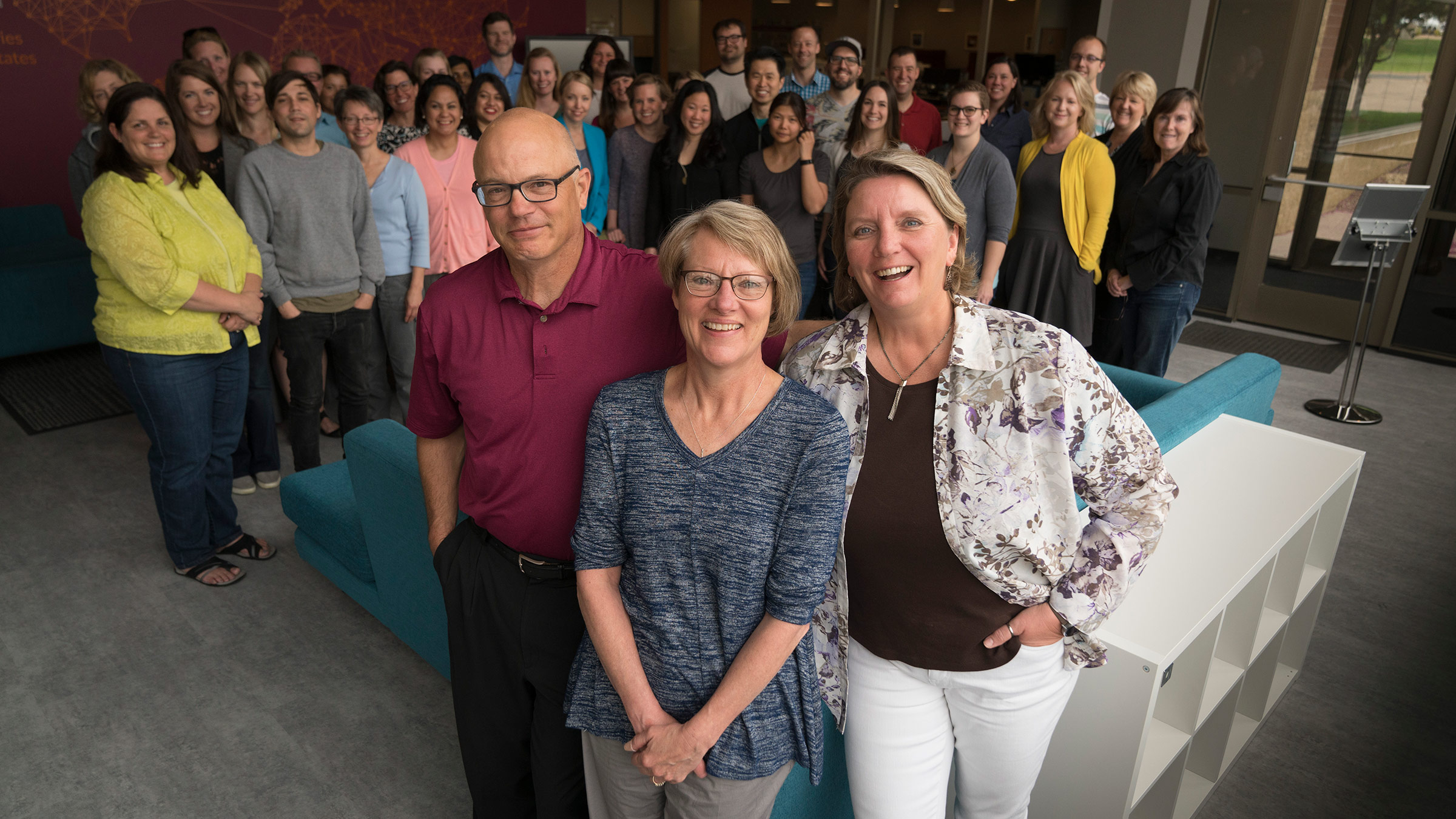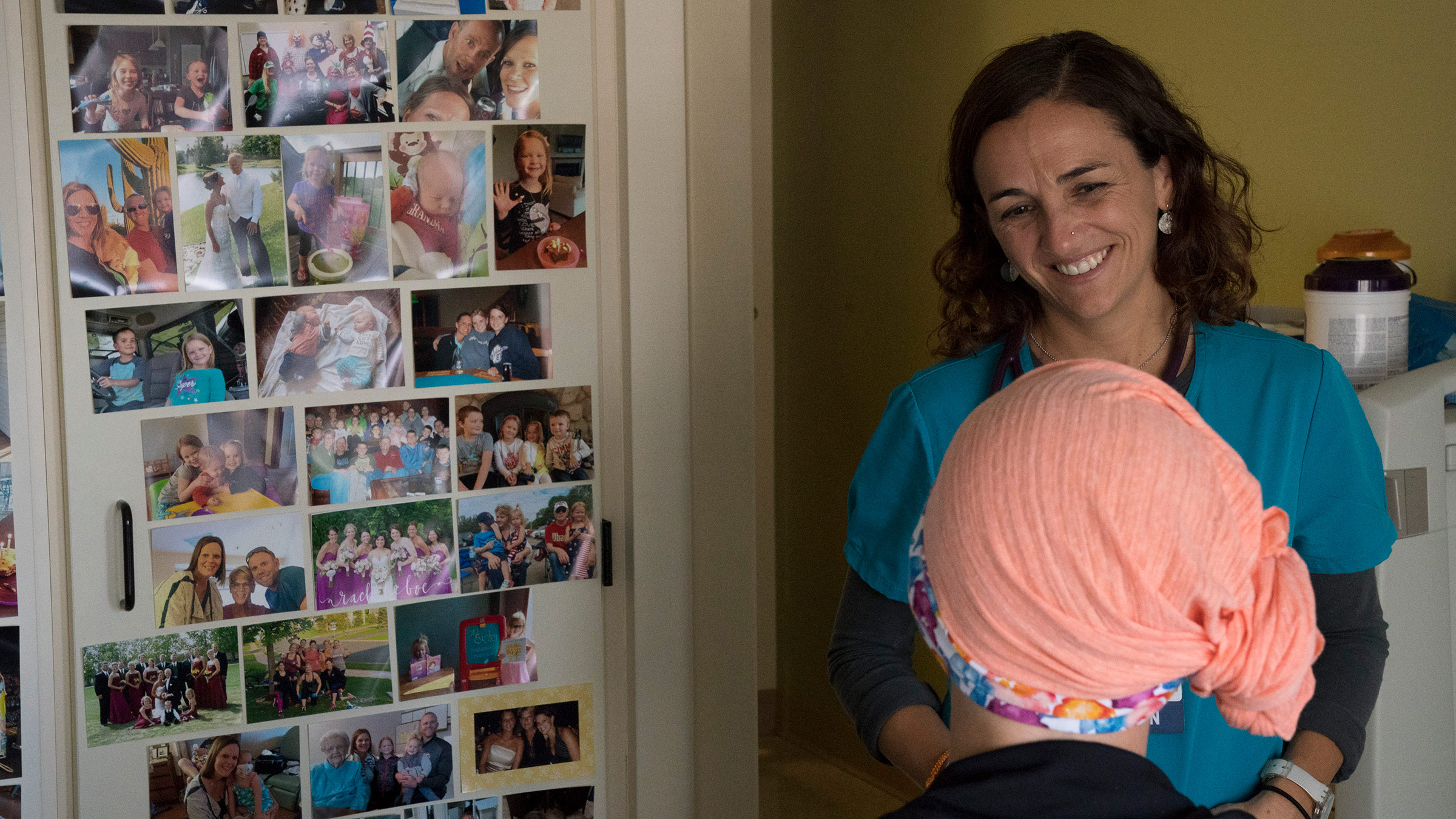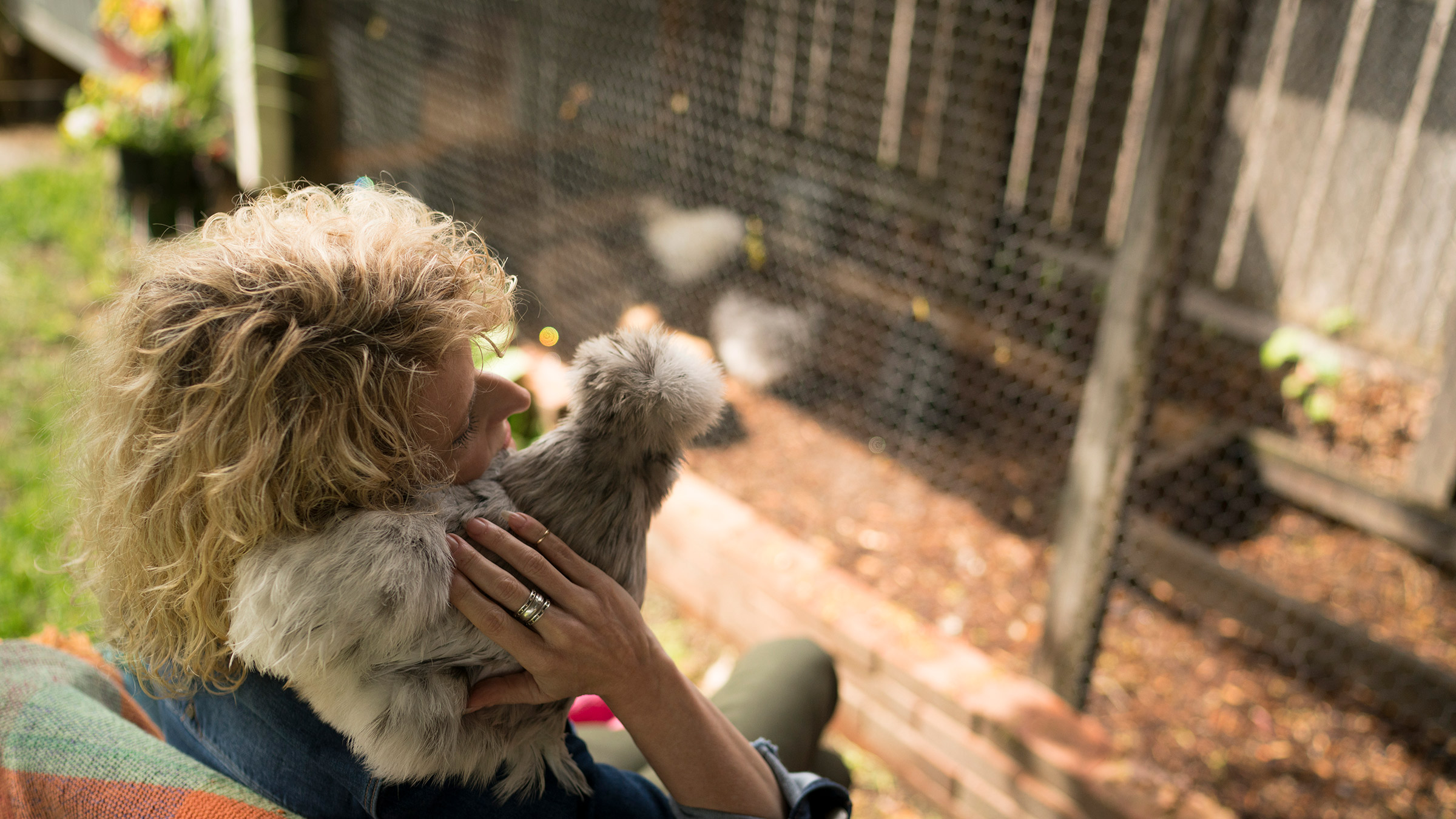Exploring the Topic of Healing

Patricia McMorrow | 07.01.22
CaringBridge has served as the world’s witness to good stuff that comes out of bad stuff since June 7, 1997, when founder Sona Mehring, of Eagan, MN, launched one website to support two college friends whose daughter was born prematurely.
Baby Brighid, delivered at 26 weeks and 1 pound, lived for just 9 days. On what would have been her 20th birthday, June 7, 2017, Brighid’s Mom, JoAnn Hardegger, of Somerset, WI, said, “You don’t ever fully heal from the loss of a child. But our daughter has a legacy.”
With an eye toward honoring the next 20 years of Baby Brighid’s legacy, the CaringBridge team has set out on a journey with National Geographic photographer and documentary filmmaker David McLain, to distill the wisdom of healing from good and decent people with the ultimate credentials.

To begin what we expect to become an ongoing series of conversations on healing, we invited CaringBridge users across the country, many of whom have run the gauntlet, to reflect on the most terrible times in their lives. Less to revisit what happened—so often agonizing, frightening and hideously unfair—and more to draw out what has happened since.
And with the simple hope of helping others, these amazing people opened their hearts, and homes, to describe how they have gone about making themselves whole again.
What they have endured is not pretty. But their stories are beautiful.
To emphasize: It is neither their intent, nor ours, to tell people how to heal, or even why they should try, especially when health can’t be restored. And we know, too, that for some people, healing may always be elusive, or unattainable.
It is our intent, though, to continue exploring, in episodic fashion, the simple and complex topic of how we heal.
For this first episode, we visited with 20 CaringBridge families across the nation. Some face complicated, uncertain or terminal diagnoses. Others are living a Bible verse quoted by many CaringBridge authors: “Struck down, but not destroyed,” (2 Corinthians, 4:8-9).
All of these ordinary souls are establishing a new normal, when all they want is the old normal back. If one thing became abundantly clear, everywhere we went, it was this: People have chosen to heal.
What we observed, though, should be viewed in this context: The choice to heal is made easily by some, and is much harder for others. And for some people, healing may never advance beyond a possibility.

We also observed that health and healing are distinct. So often mentioned in the same breath, in real life the two can exist together, separately or not at all. Here’s what people had to say:
- Health: Absence of illness, disease, injury, either from the start, or as a result of cure and/or healing; being whole.
- “Health is a noun. Healing is a verb.” (Dr. Archelle Georgiou of Minneapolis, storyteller, former healthcare industry executive and author of Healthcare Choices, a book on medical decision-making.)
- Healing: Becoming whole again, even when cure or restored health are not an outcome; deciding to move ahead with what remains; broken, but repaired.
- “You learn that through something so tragic and sad, you have actually grown and changed in a way that makes you better and stronger than you were before.” (Claire Schwab of Alexandria, VA, whose young son, Teddy, was gravely injured in a car accident.)
- “I hope for a cure, and for a long life, but my main focus is on finding wholeness in each moment.” (Michael Bischoff of Minneapolis, 23 months after his diagnosis of glioblastoma multiforme, an aggressive brain cancer.)
From what we observed, a decision to heal exists in parallel, or sometimes perpendicular, to prognosis. Translation: Hard to explain; easy to see.
We also saw that healing looks different for everyone. A glimpse of the pure and powerful stories we captured:
- A young widow changed careers to become an oncology nurse after losing her husband to cancer.
- Driving country roads in his pride-and-joy Chevy pickup helped heal a young man who suffered a “heart attack of the mind” and attempted to take his life.
- During treatment for breast cancer, a 24-year-old woman sat at the piano in the church where she works and played her heart out, late at night, with only God as her audience.
- Dressing to the nines, complete with gorgeous gloves to protect fingers damaged by disease, makes a woman living with two serious illnesses feel un-sick. She said, “People think sick people should look sick, but that’s not my style.”
- A Gulf War veteran takes target practice against the cancer that upended his life.
- So that her only son, who died too young, will not be forgotten, a mom used her yearly income tax refund to do random acts of kindness for strangers.
While we had originally expected to share these stories within a framework that also addresses the science of healing—at CaringBridge we call it “measuring the magic”— this will have to come at a later point in the series.
Why? Academic experts, who seldom agree on much, describe the science of healing as elusive, at best.
At the outset, we asked for help from Mary Jo Kreitzer, PhD, RN, and director of the Center for Spirituality & Healing at the University of Minnesota.
In response to our request to be pointed toward “the best science in healing,” she replied: “This answer may frustrate you or delight you. There is no universal definition of healing.”

More frustrated than delighted, we kept asking around. With a respectful nod to Dr. Kreitzer, our findings can best be described as a Rubik’s Cube. Among the highlights:
- Dr. Annie Brewster and Jonathan Adler, PhD, of the Boston-based, nonprofit Health Story Collaborative, introduced us to scholarship around narrative identity (telling stories to help make sense of our experiences) and post-traumatic growth (faced with traumatic events, including a health crisis, people can actually grow and thrive in response). These represent layers of healing.
- Tanya Bailey, a Minnesota therapist and doctoral student who has recently been through a cancer journey, is deeply exploring research on how interaction with registered therapy animals advances healing.
- Some research advances particular models of healing, such as the “Whole Health Cairn,” a wellness model based on scientific findings, by Dr. Lissa Rankin, author of Mind Over Medicine.
- Sheryl Sandberg’s Option B has lately focused scientific mindshare on the concept of “resilience,” which also represents a dimension of healing.
But a noted academic, Jeff Levin, PhD, who came to us by way of Dr. Kreitzer offers hope that healing, much like “happiness,” “resilience” and “spirituality,” may eventually be defined precisely enough so we can measure the magic.
The April 2017 issue of Explore: The Journal of Science and Healing is entirely devoted to wrestling healing into shape.
In it, Levin writes: “The issue of healing is too important, clinically and scientifically, to be left to sketchy and emotion-driven conceptual engagement (or non-engagement) which inhibits the rigorous empirical research that this subject very, very richly deserves and requires.”
We couldn’t agree more. And in future segments of this conversation, we would love to share more of the science that exists, and to participate in helping the world arrive at an agreed-upon, and measurable, definition of healing.
But for now, we invite you to look into the eyes of these women, men and children surviving things you wouldn’t wish on your worst enemy.
What they truly want is for you to never walk their path. But if you do, may health and healing be yours. And if fate decides otherwise, may some good somehow emerge from bad.
These amazing people believe—and we do, too—that the choice to heal is always in your power.
I’m a traumatic brain injury survivor and I was hospitalized for 59 days. My days look totally different now. I try and remain positive about my days going forward. Sadness takes over my emotions mostly, but I push forward. I’ve been chosen to keep making trips around the sun for some reason and I just get to figure out what that is.
https://thegioimebe.com.vn/sua-non-to-yen-goldilac-grow-2.html
Is this the lois rymer from illinois
So true and important. Spiritual care rally’s me!
Please, pray for my friend Janet Borgos, she will have surgery on Monday June 19th at 8am:, she is a sweet and very special person. Thank you and be blessed.
Beautiful Thoughts & Prayers going out for Faith McAnally – You are so Loved !!
Still wrestling with my mom’s decline and eventual death from dementia. Looking forward to future articles.
Thank you ?
Pray for my son Blake Arnett and all suffering from cancer.
I STARTED READING THIS ARTICLE BECAUSE OF MY SISTER EVELYN PATTON
I THING YOU ARE DOING A GREAT JOB KEEP UP THE GOOD WORK I WILL BE WAITING FOR THE NEXT ARTICLE
Thank you for sharing this wonderful article. Has anyone explored how trama affects each family member perhaps differeny? My husband was ina race boat explosion and while in Harbor View burn unit fir 16 days psychologist quietly watched the dynamics of our four children as they individually addressed the shock and unknown fear of possibly loosing their father. The knowledge learned from what psychologist witnessed in our family’s behavior was extremely helpful to me and my husband. When another tramatic accident happened to their father, the same adult children’s behavior has been tested.. Its shocking how each adult child processes the fear of loosing their father. While healing and hurtful to the patient and spouse. Any insights on this subject?
Thank you for your great work and this publication.
I am so glad you are doing these articles. The end of 2008 I found myself writing on CaringBridge about my husband’s story. It was so helpful each day for me to journal his progress…or lack there of in some instances.
I am in a support group now and we will all benefit from these articles as they chronicle people’s lives…I will definitely share! Thank you.
A granddaughter who is getting help with a chronic autonomic disease at Children’s Hospital of Wisconsin said she is going to train in a medical field so she can work there when she is ready. Then I found out that a significant percentage of the nurses there were patients themselves as children. Catastrophe strikes. At some point almost all of us will be care givers and at some point nearly all of us will need care. Knowing this will make us more caring and more able to cope.
Hello. I’m Jeff
As a hospital chaplain, I have spent three decades engaged with children, adults and health care professionals who have experienced life-changing or life-ending loss. I’ve observed and recorded a significant number of aspects and events that contribute to one’s healing or not healing — rarely have these fallen into the category of “sketchy and emotion-driven engagement or non-engagement.” Instead they range from a person’s expanded interpretation of hope, to the quality of one’s social connections, perception of wholeness, and recognition that loss and grief tend to consist of multiple parts, each needing attention. Looking forward to the April issue of Explore.
Beautiful people,loving hearts.????